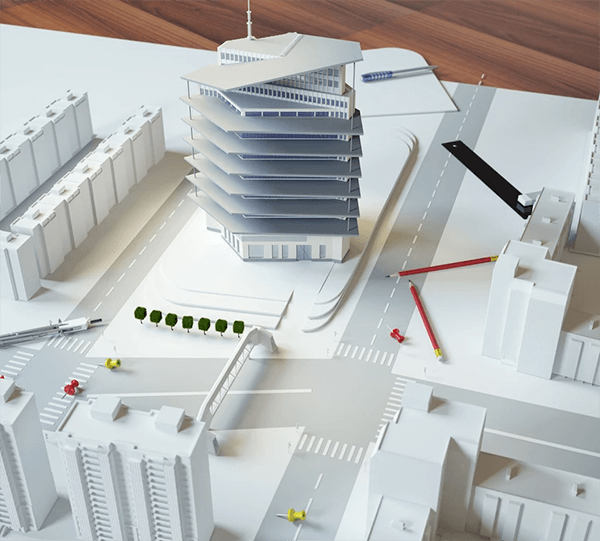Buying a home is both a milestone and a financial commitment. To make the best decisions, it’s important to understand the different types of mortgages and have a clear plan to pay yours off faster. Doing so can help you save thousands of dollars.
Understanding Mortgage Types in Ontario
Before we jump into how to pay your mortgage faster, let’s take a moment to understand the different mortgage options available in Canada—especially those offered by lenders in Ontario and the GTA. Choosing the right type of mortgage sets the foundation for everything that follows. From fixed-rate to variable-rate options, open versus closed terms, and the flexibility of prepayment privileges, each choice impacts how much interest you’ll pay over time and how quickly you can become mortgage-free. By understanding these options upfront, you’ll be better equipped to make smart financial decisions that align with your long-term goals.
Closed Mortgages
A closed mortgage is a common option in Canada, especially for buyers looking for lower interest rates. It typically offers more competitive rates than an open mortgage, which can help keep your monthly payments lower and save on interest over time.
However, with this benefit comes less flexibility. A closed mortgage limits how much of the loan principal you can pay off early without facing penalties. Most lenders allow you to make annual payments of up to 15%–20% of the original loan amount (this can vary by lender). If you go over that limit, say by making an extra-large payment or trying to pay off the entire balance early, you’ll likely be charged a prepayment penalty. This fee is meant to compensate the lender for the interest they expected to earn.
Because of these restrictions, closed mortgages are ideal if you plan to stay in your home for the full term and don’t expect to make large additional payments. But if flexibility is important, like if you might sell the home, refinance, or come into extra funds, a closed mortgage may not be the best fit.
Example:
Let’s say you buy a home for $550,000 and take out a closed mortgage of $440,000 (after making a 20% down payment). Your lender allows you to make prepayments of up to 20% of the original mortgage amount during the term, that’s up to $88,000 without penalties. If you decide to pay more, say $100,000, the extra $12,000 could come with prepayment charges. So, if paying off your mortgage early is a priority, it’s important to understand how much flexibility your mortgage type offers.
Open Mortgages
An open mortgage gives you maximum flexibility when it comes to repayment. With this type of mortgage, you can make large payments, pay off the entire loan early, or refinance at any time during the term, without incurring prepayment penalties.
This option is especially useful if you expect a significant increase in income, are planning to sell your home soon, or want the freedom to pay down your mortgage aggressively. For example, if you receive a work bonus, inheritance, or income from a side business, you can apply those funds directly to your mortgage balance without worrying about fees.
However, that flexibility comes at a cost. Open mortgages typically come with higher interest rates than closed mortgages, which means higher monthly payments and more interest paid over time, unless you take advantage of the freedom to pay it off early.
Open mortgages are a good choice if you value freedom and foresee changes in your financial situation. But if you’re planning to hold your mortgage for the full term with steady payments, you may save more by going with a closed mortgage.
Convertible Mortgages
A convertible mortgage is a flexible option that sits between open and closed mortgages. It typically starts as a short-term closed mortgage with a lower interest rate, but gives you the option to convert it into a longer-term mortgage, usually without paying any penalties.
This feature allows you to test the waters with a short-term commitment, and once you feel more confident in your finances or market conditions, you can lock in a longer-term rate that offers more stability.
This type of mortgage is ideal for homebuyers who expect their financial situation to change in the near future, for example, someone who’s waiting on a job promotion, recovering from recent debt, or planning to settle into a long-term home soon.
With a convertible mortgage, you get the benefit of short-term flexibility without giving up the option to secure a long-term plan when the time feels right.
What is amortization and mortgage term?
These two terms often confuse buyers, so let’s clarify:
- Amortization Period: The total time you’ll take to pay off your mortgage (usually for 15, 20, 25, or 30 years).
- Mortgage Term: The length of your current mortgage contract (usually 1 to 5 years). At the end of each term, you can renegotiate your rate and terms.
Tip: A shorter amortization period means higher monthly payments, but less interest paid over time. More on this below!
Conventional vs. High-Ratio Mortgages
- Conventional Mortgage: You put down at least 20%. No need for mortgage insurance.
- High-Ratio Mortgage: You put down less than 20%. You’ll need to pay for mortgage insurance through CMHC or a similar insurer.
How to Pay Off Your Mortgage Faster
Now that you’re familiar with the basics, let’s explore ways to get out of mortgage debt sooner. Paying off your home faster means saving thousands, sometimes even tens of thousands, in interest, and reaching full homeownership years earlier.
Here are five proven strategies to help you get there.
Increase Your Regular Mortgage Payments
By increasing your monthly payments, more of your money goes directly toward reducing your principal, and that lowers the interest you’ll pay over time.
Example:
Let’s say your mortgage is $500,000 with a 25-year amortization and a fixed interest rate of 6.85%. Your monthly payment would be around $3,460. If you increase that to $3,700 just $240 more per month, you could save tens of thousands of dollars in interest over the life of your mortgage and become mortgage-free up to 8 years earlier, depending on your lender’s terms.
How to do it:
Ask your lender if you can bump up your payment amount. Many allow changes once per year without penalties.
Switch to Accelerated Payments
Instead of paying monthly, consider accelerated weekly or bi-weekly payments.
How it works:
- Accelerated bi-weekly: You make 26 payments per year instead of 12 monthly payments.
- Accelerated weekly: You make 52 payments per year.
This adds the equivalent of one extra monthly payment each year — all of it going toward the principal.
Why it matters:
Over time, this small shift can shave years off your mortgage.
Make Total Prepayments
Check your mortgage contract to see if you’re allowed to make annual total payments. This money goes directly toward reducing your principal.
Example:
Let’s say you get a $5,000 tax refund or bonus. Instead of spending it, you apply it to your mortgage. That one payment alone could save you thousands in interest.
Tip: Use this option every year if your budget allows.
Shorten Your Amortization Period
The shorter the amortization, the faster you’ll be mortgage-free.
Example:
- 25-year amortization: Lower monthly payments, more interest.
- 20-year amortization: Higher monthly payments, less interest.
Even reducing your amortization by just five years could save you tens of thousands of dollars in interest.
How to do it:
You can opt for a shorter amortization when you first get your mortgage, or when renewing.
Pay a Big Total at Renewal Time
Most lenders let you pay any amount toward your principal at renewal, with no penalties.
This is your golden opportunity.
Example:
If you receive an inheritance, profit from selling a business, or simply saved diligently, apply those funds during renewal. You’ll wipe out a big chunk of the debt and significantly reduce your future interest.
Can Prepayment Penalties Apply?
Before you start making extra payments or increasing your payment frequency, check your mortgage agreement. Some mortgage types (like closed mortgages) may come with prepayment charges if you go over the allowed amount.
Always speak with a mortgage expert before making changes, especially when refinancing, paying off early, or breaking your mortgage.
While the idea of carrying a mortgage for 25 years might feel daunting, the truth is: you don’t have to. With the right mortgage structure and a few strategic moves, you can save thousands of dollars and enjoy the pride of fully owning your home years ahead of schedule.
At Cityscape, our experienced advisors are here to help. We offer a free consultation to assess your personal situation and guide you through the options that make the most sense for you.
Ready to explore your best path forward?
Contact our Cityscape experts today and let’s make your homeownership goals a reality, on your timeline and on your terms.












